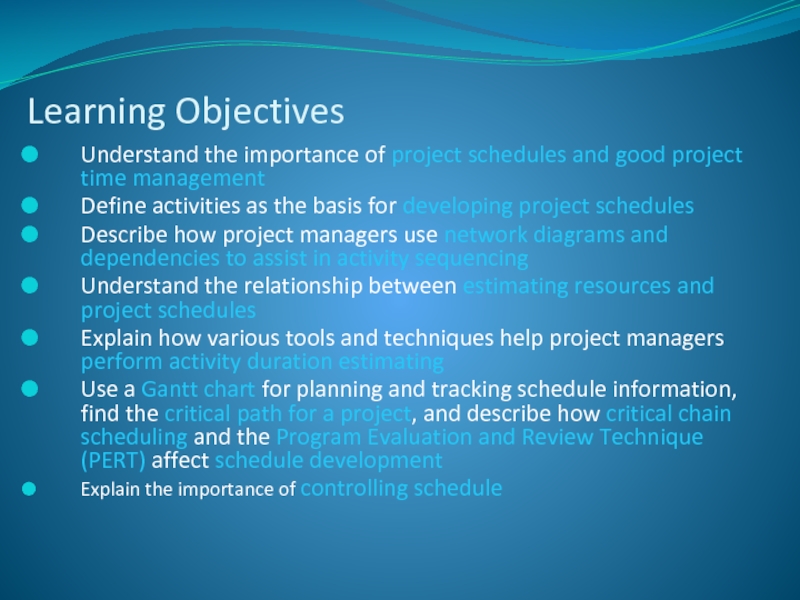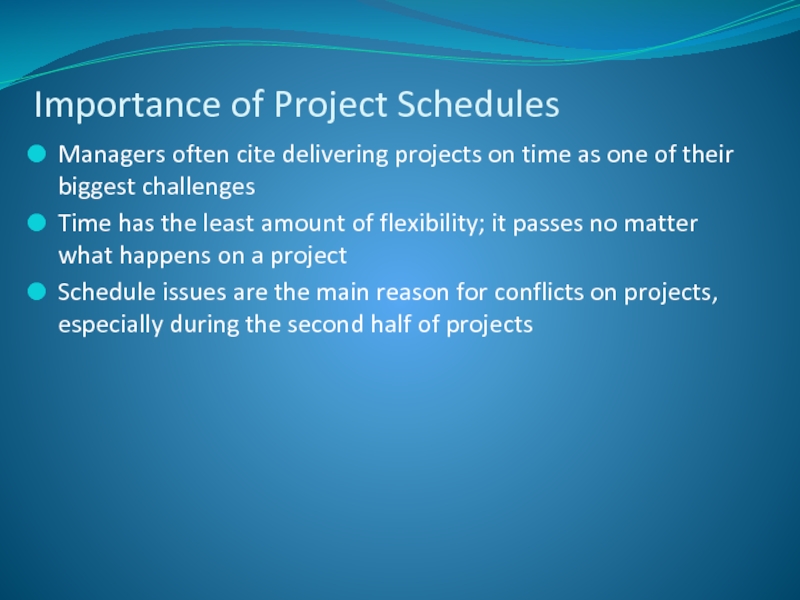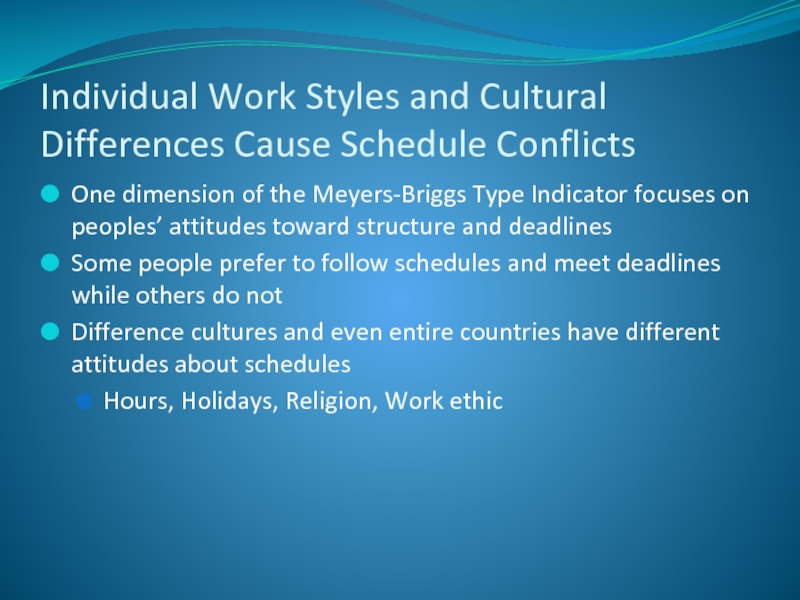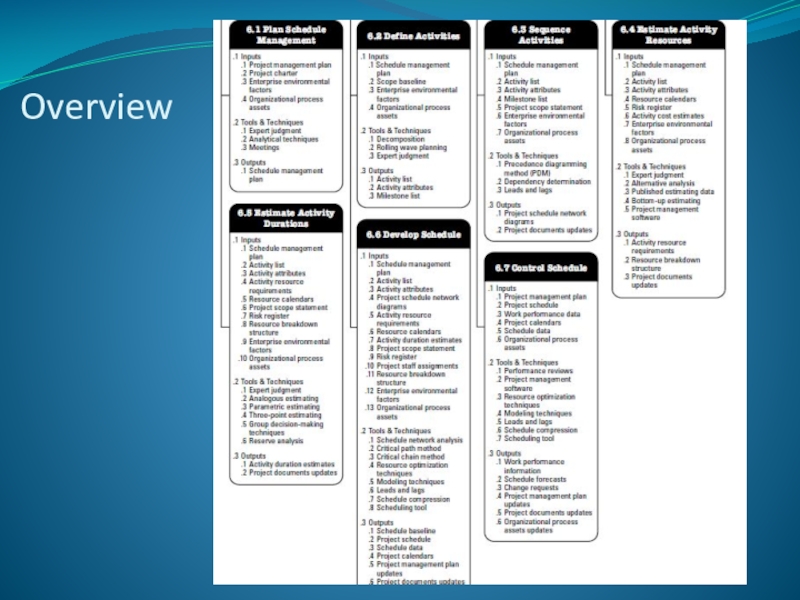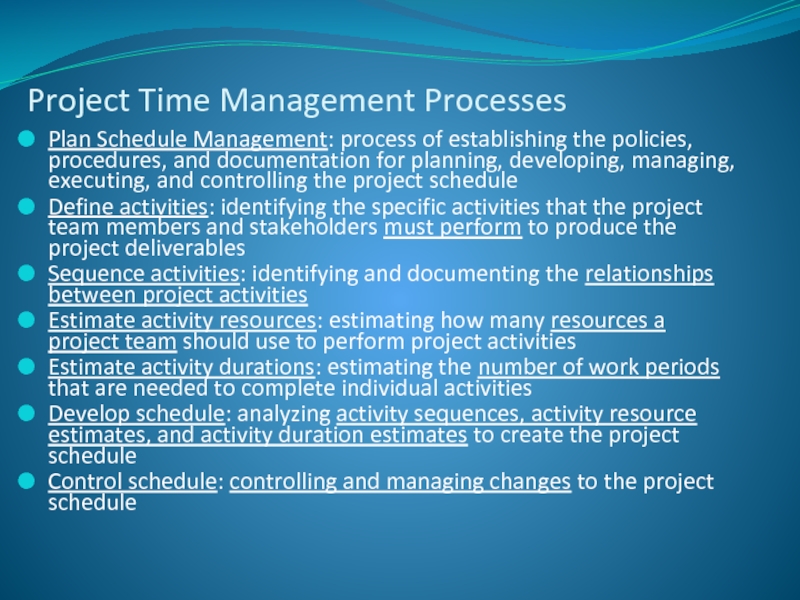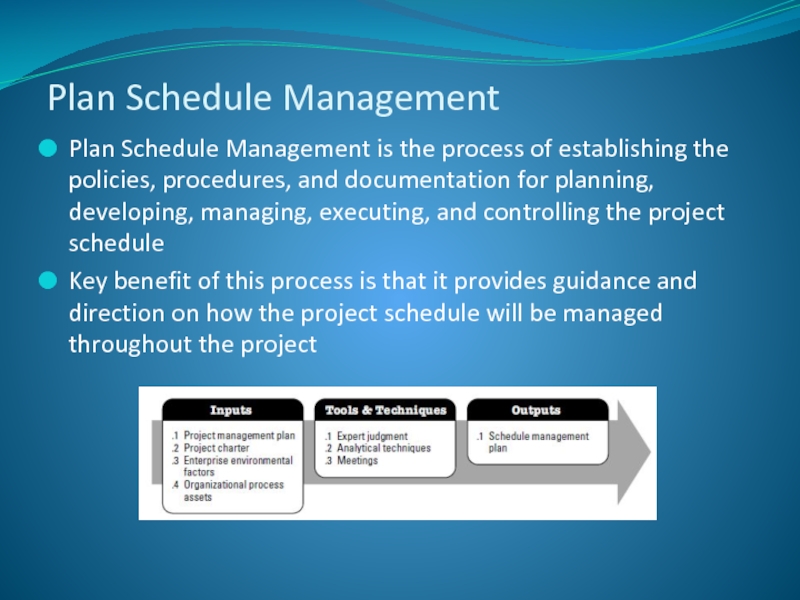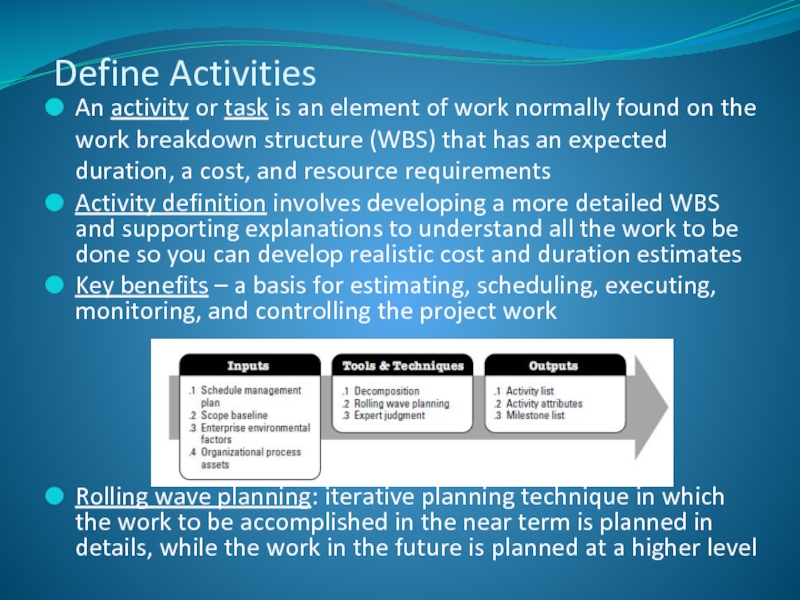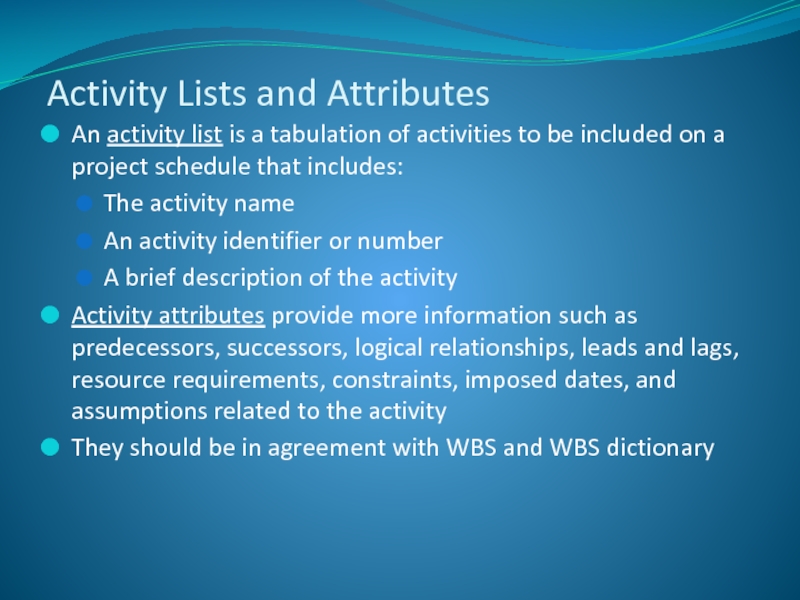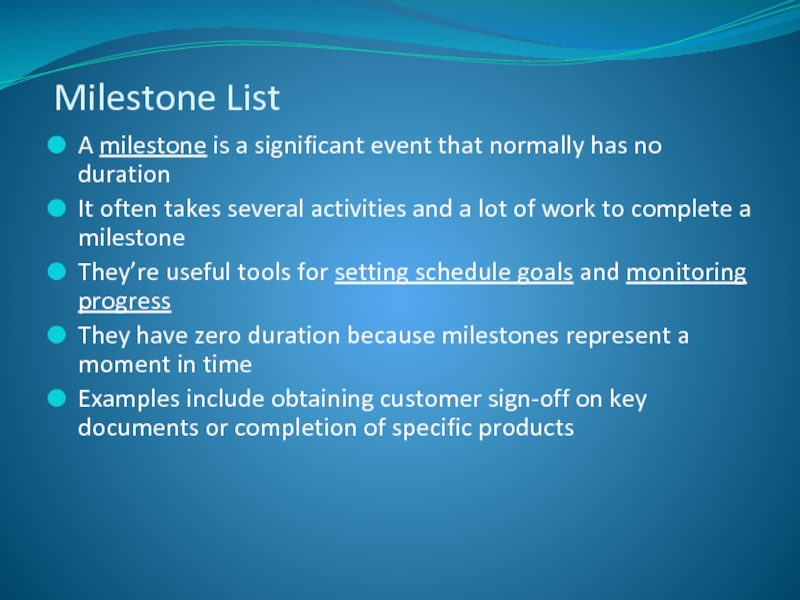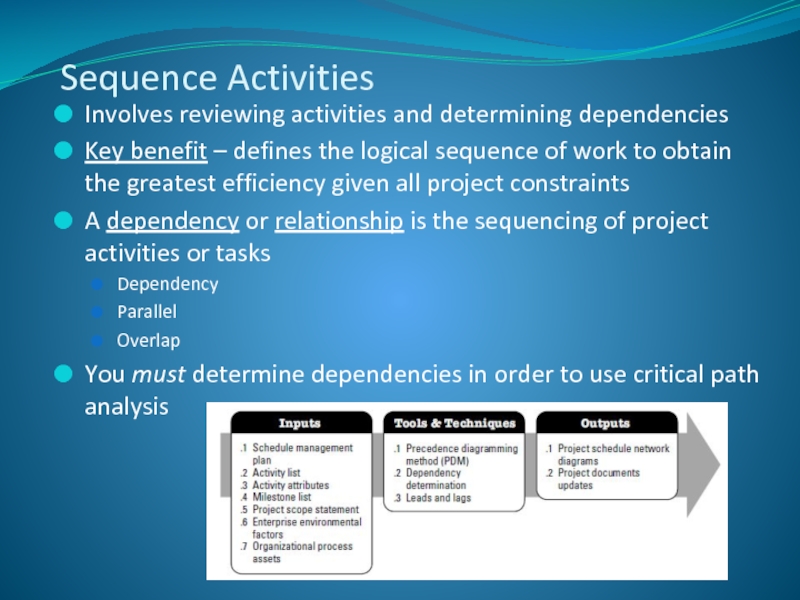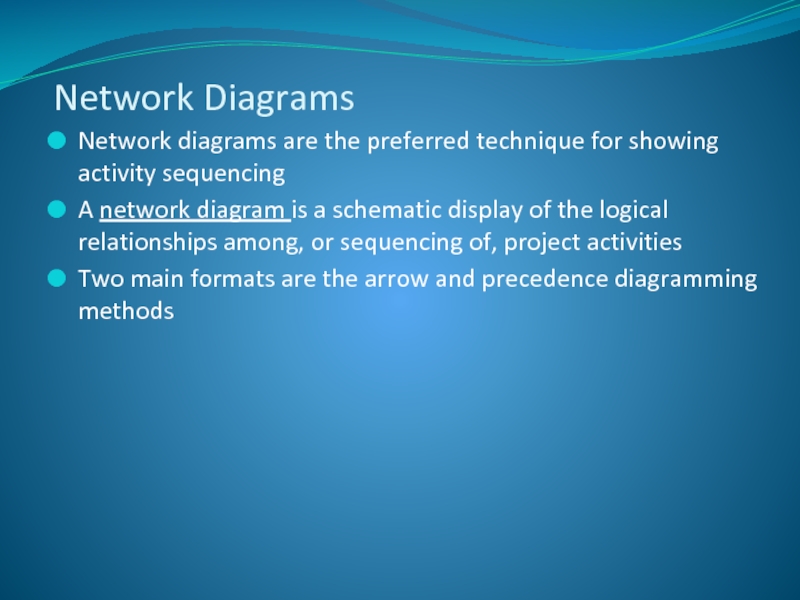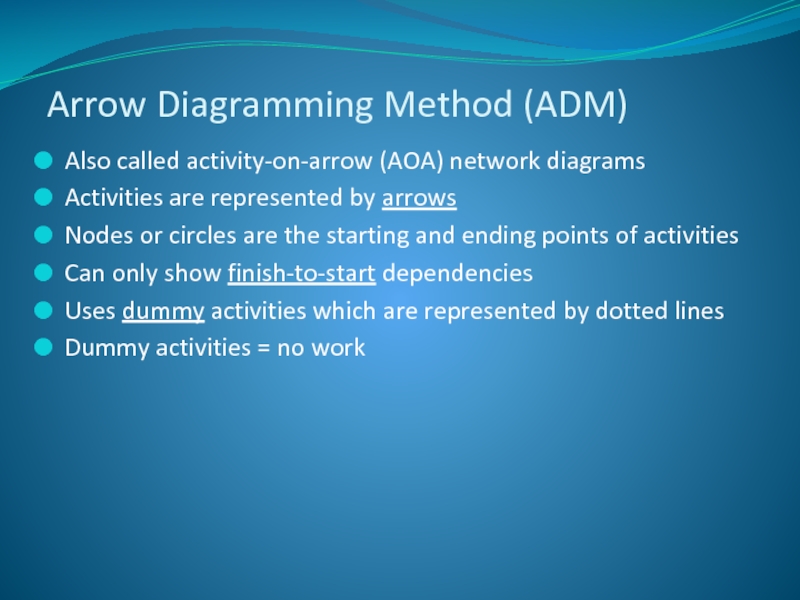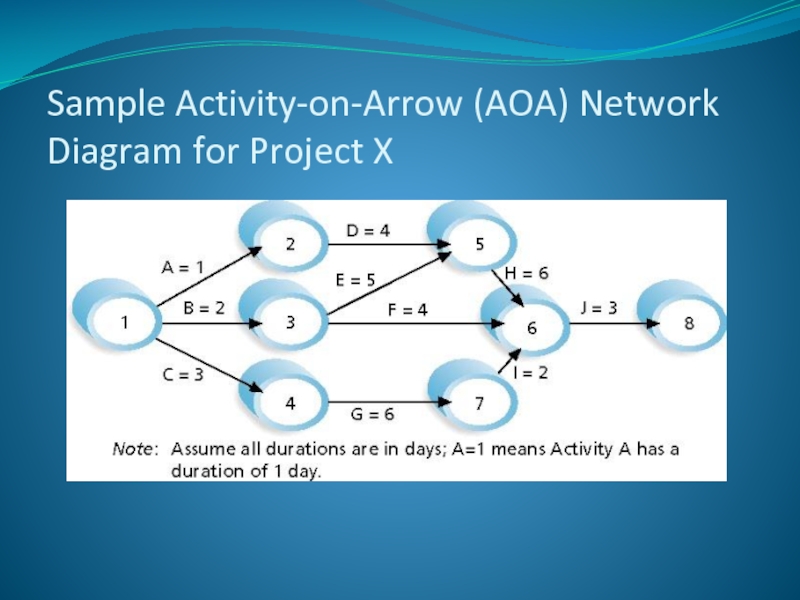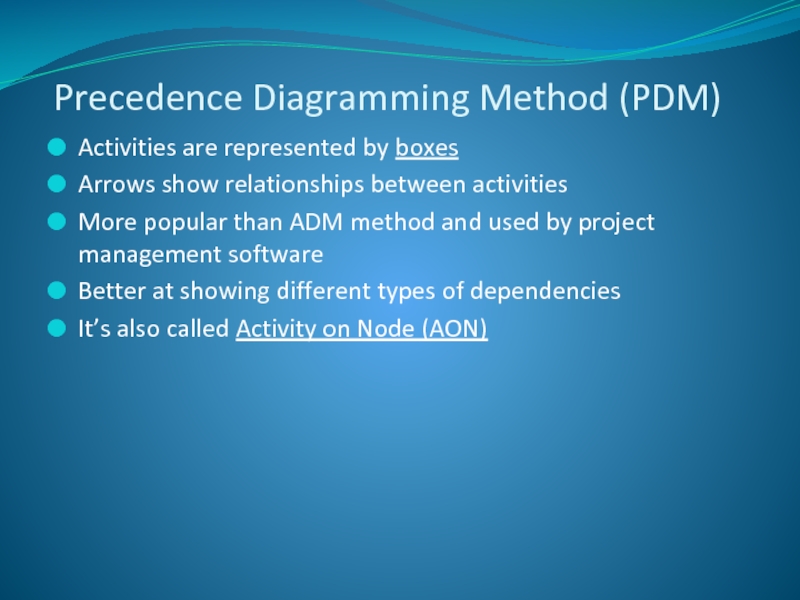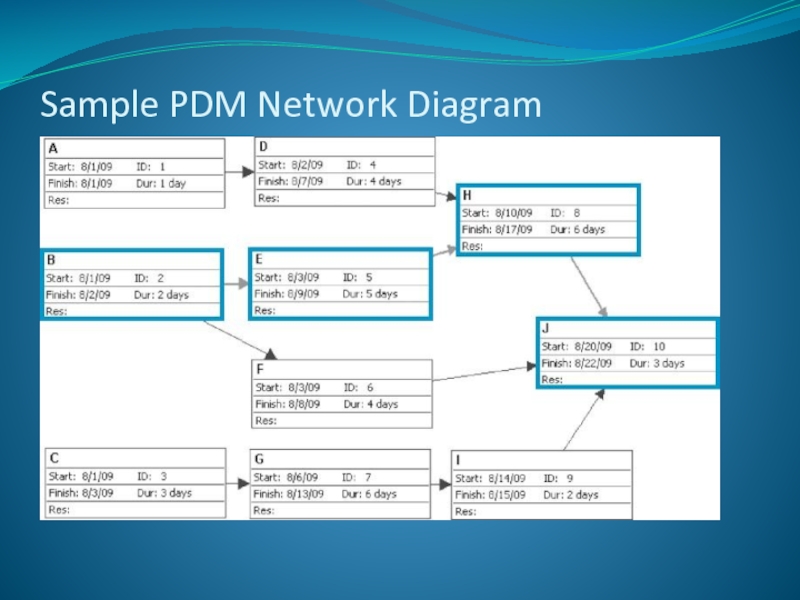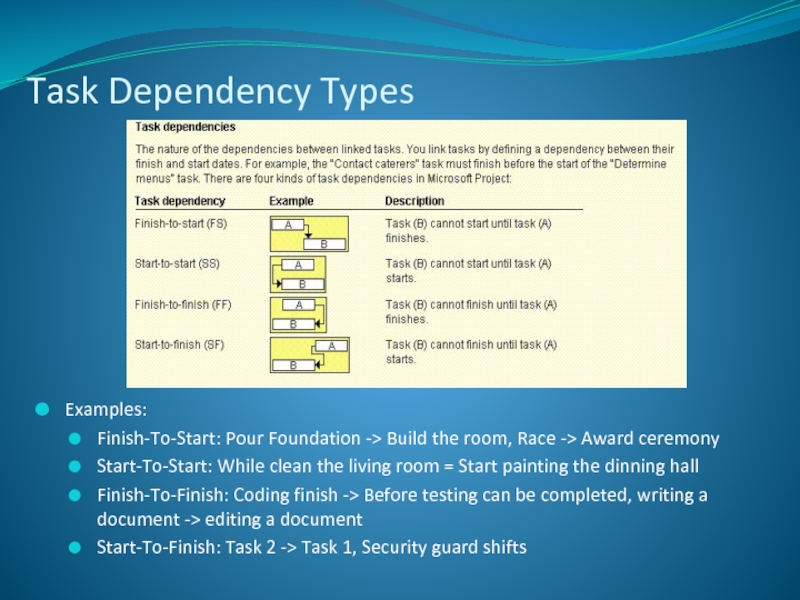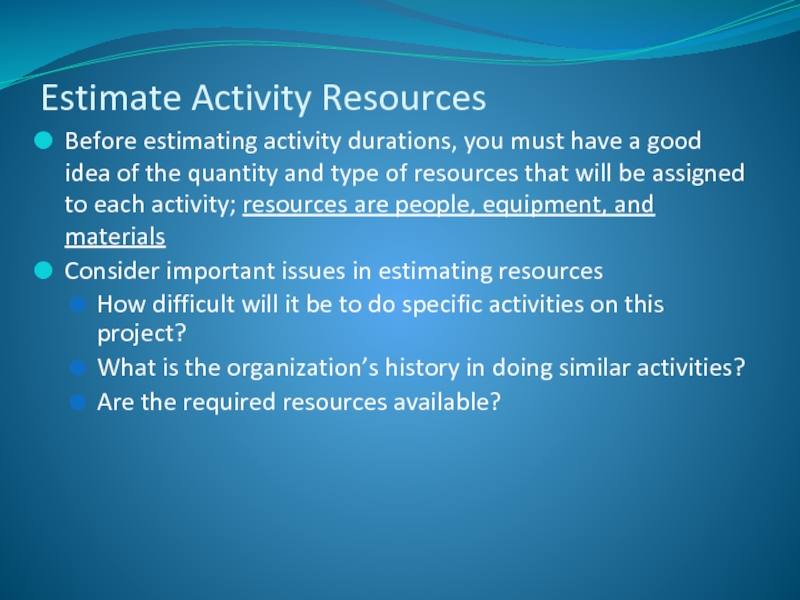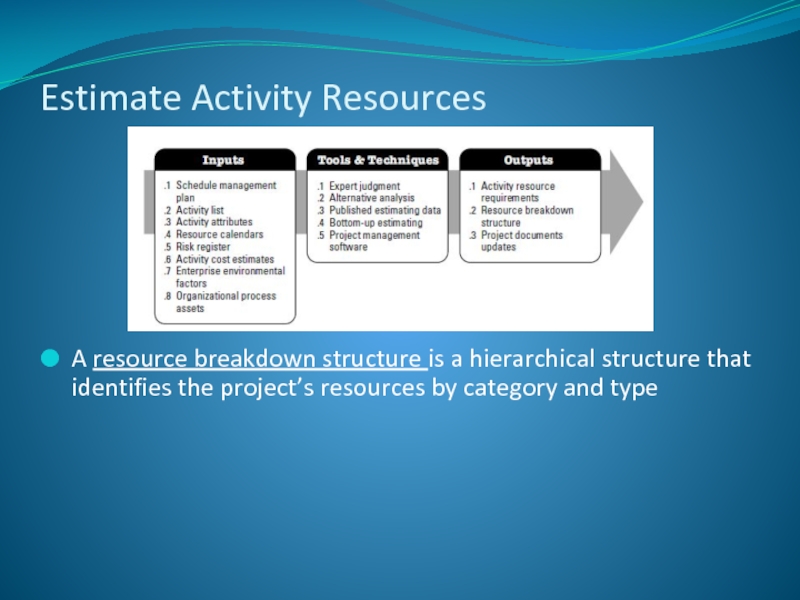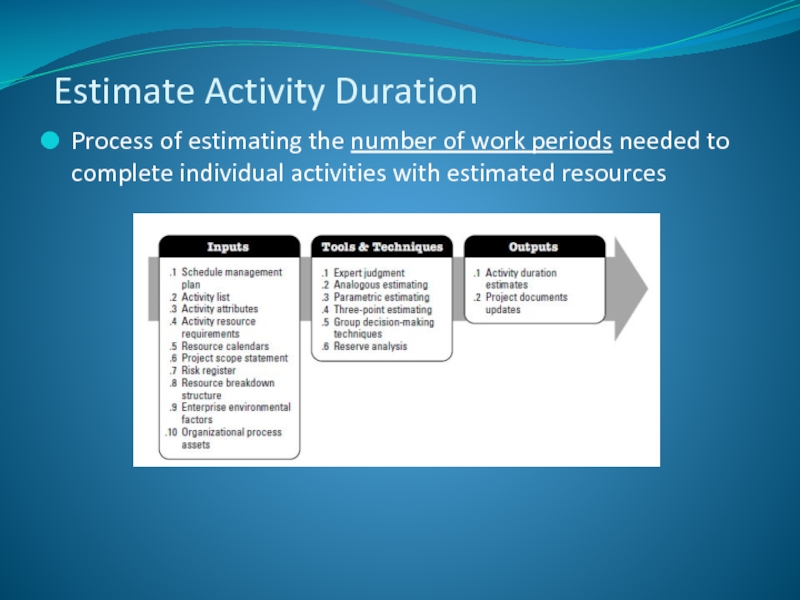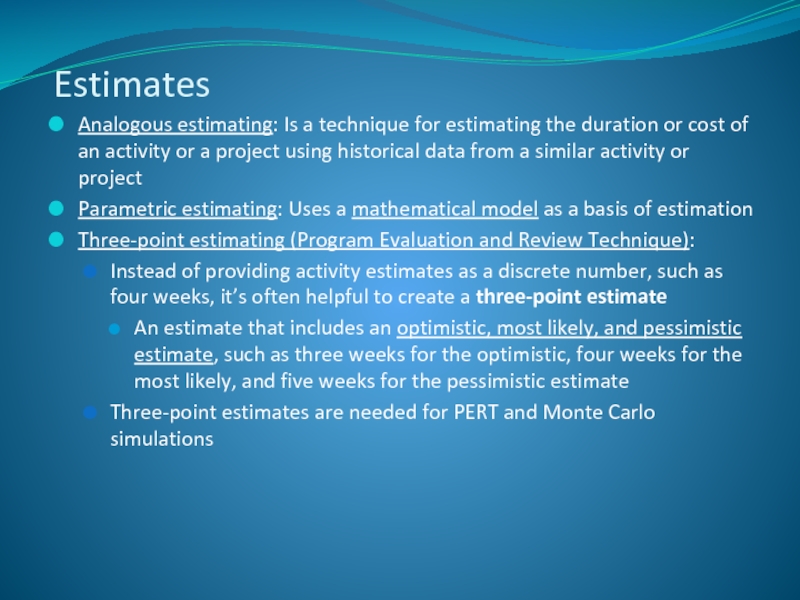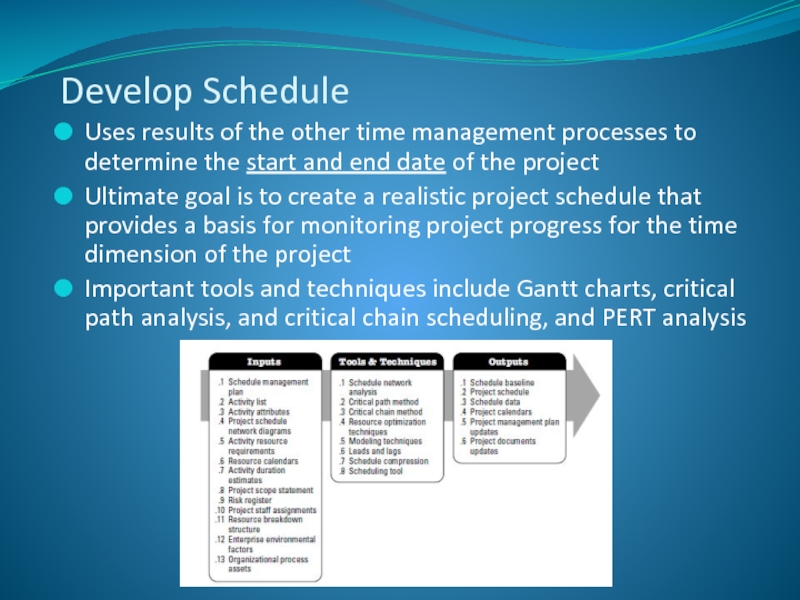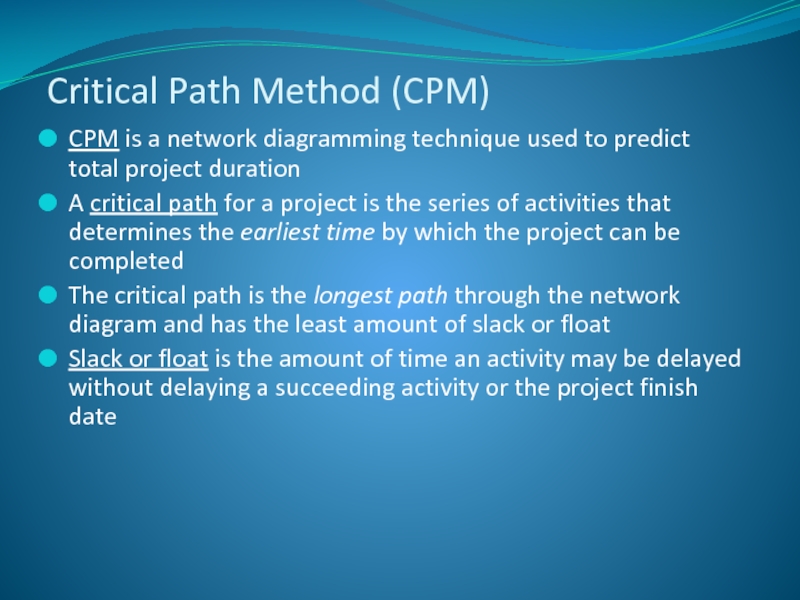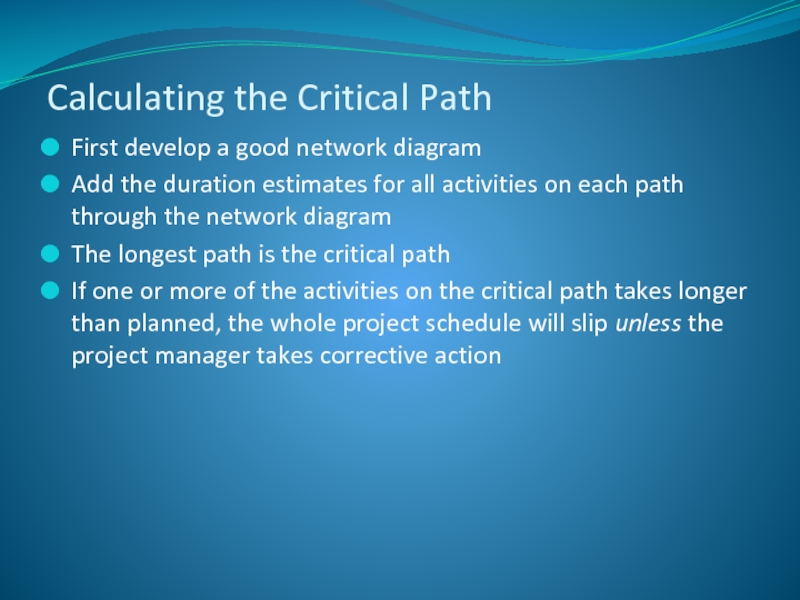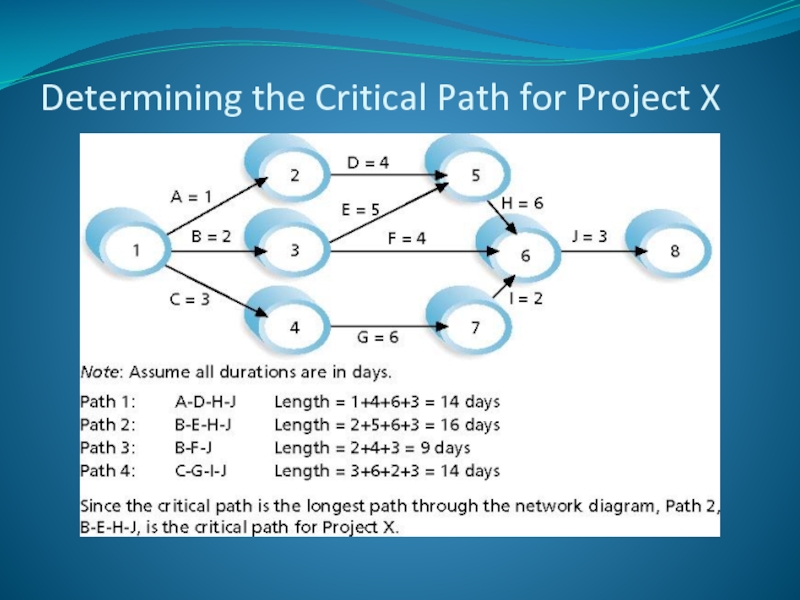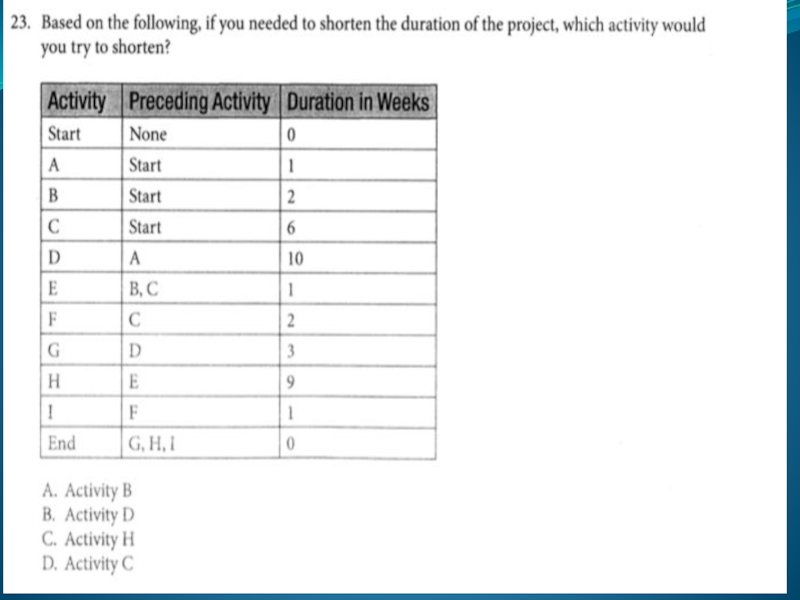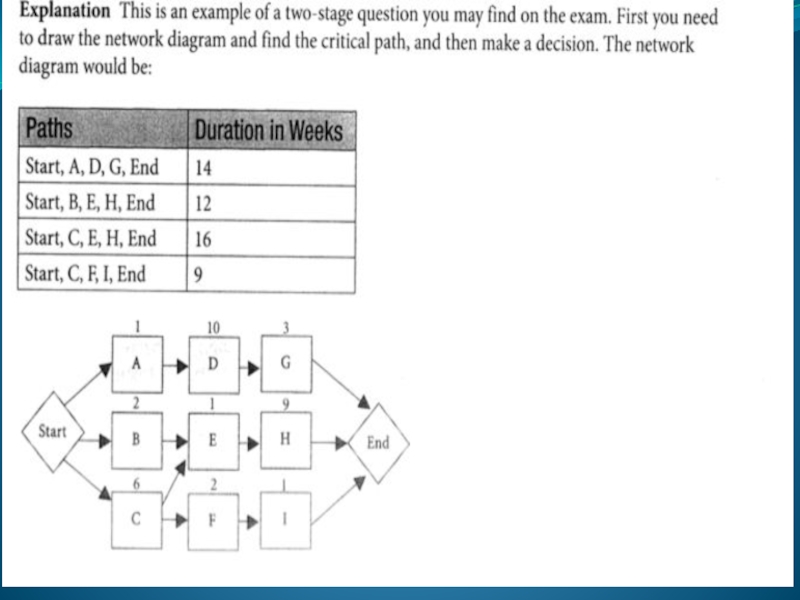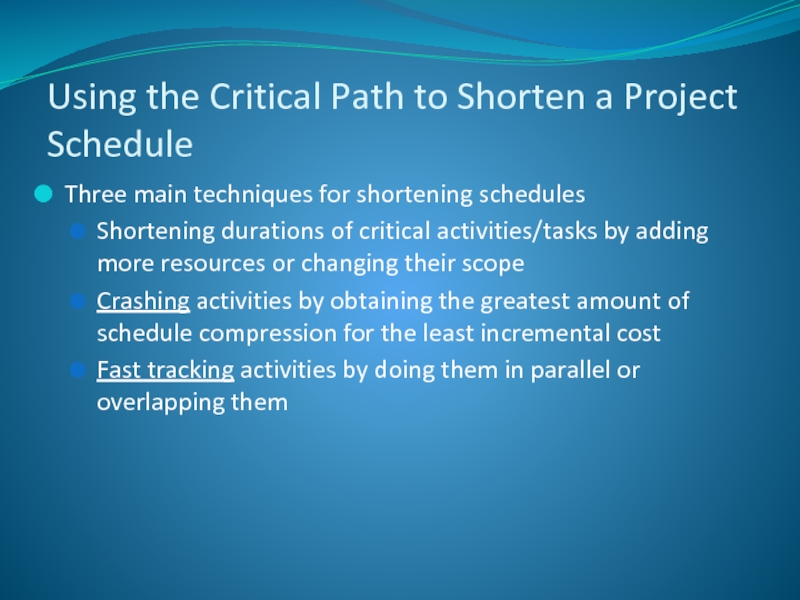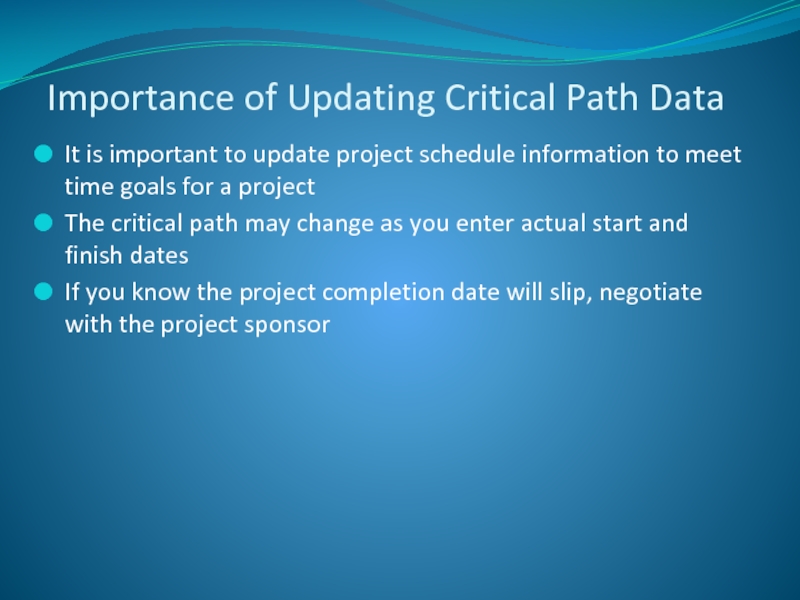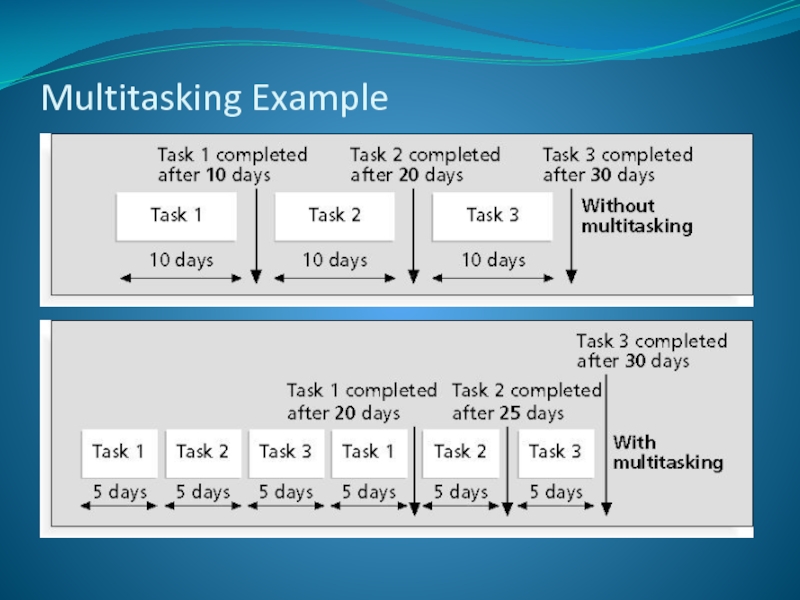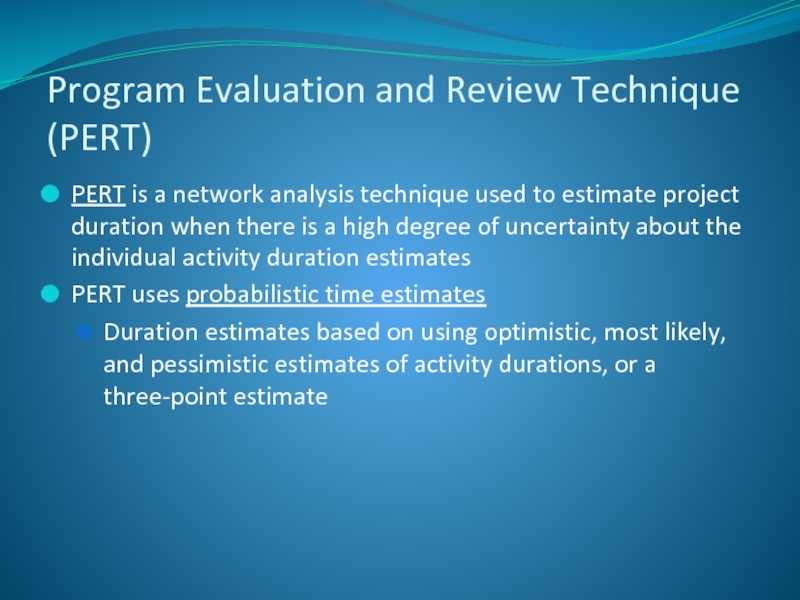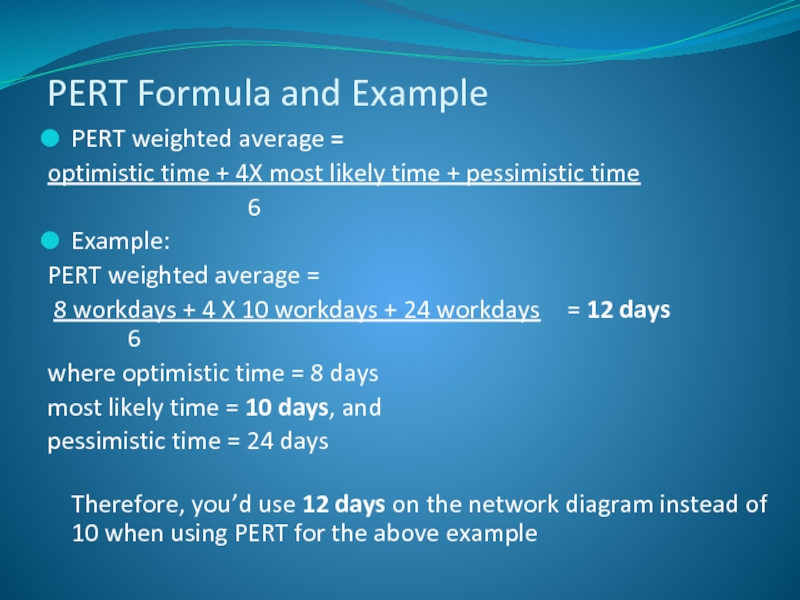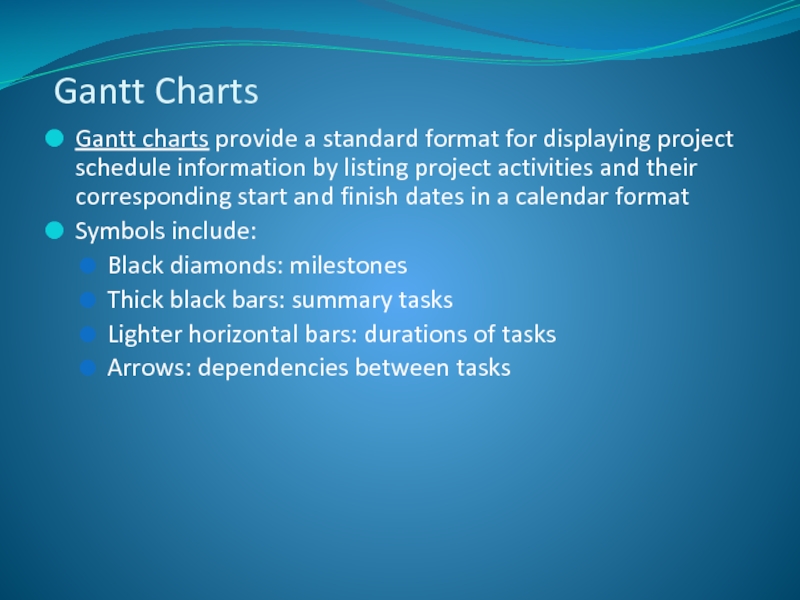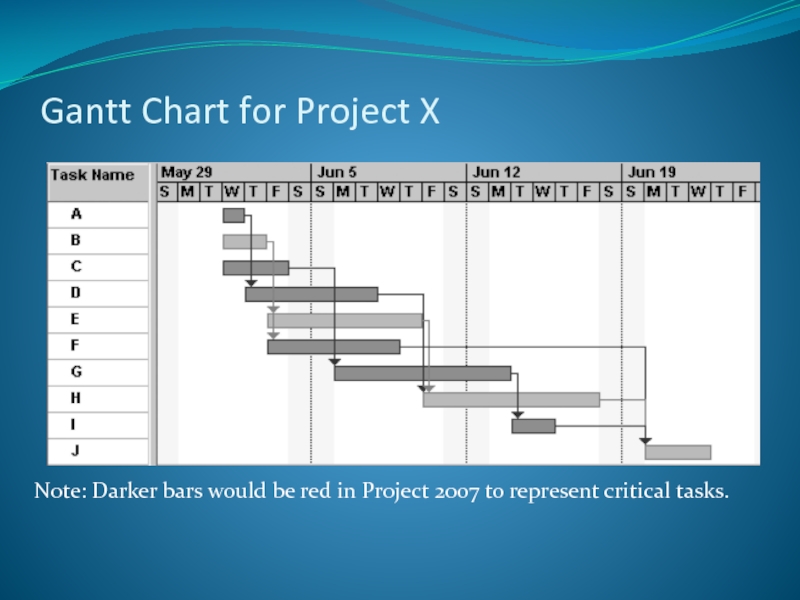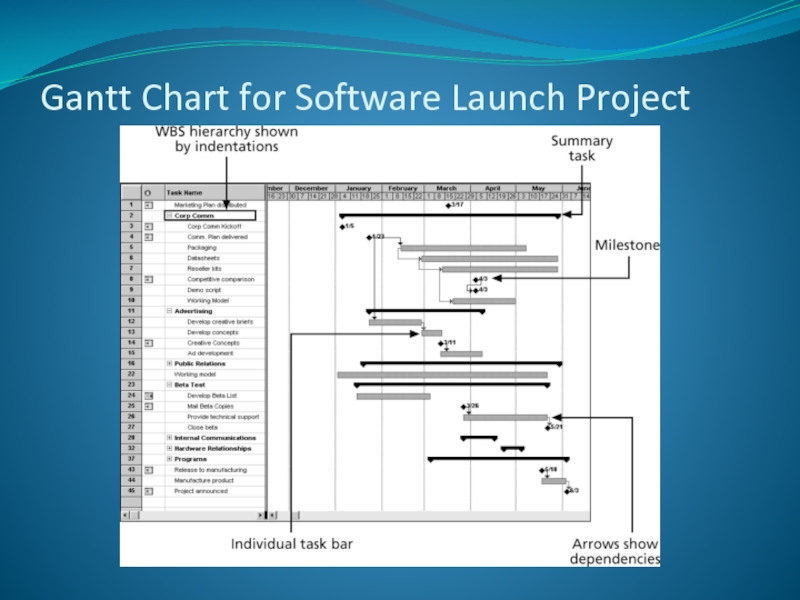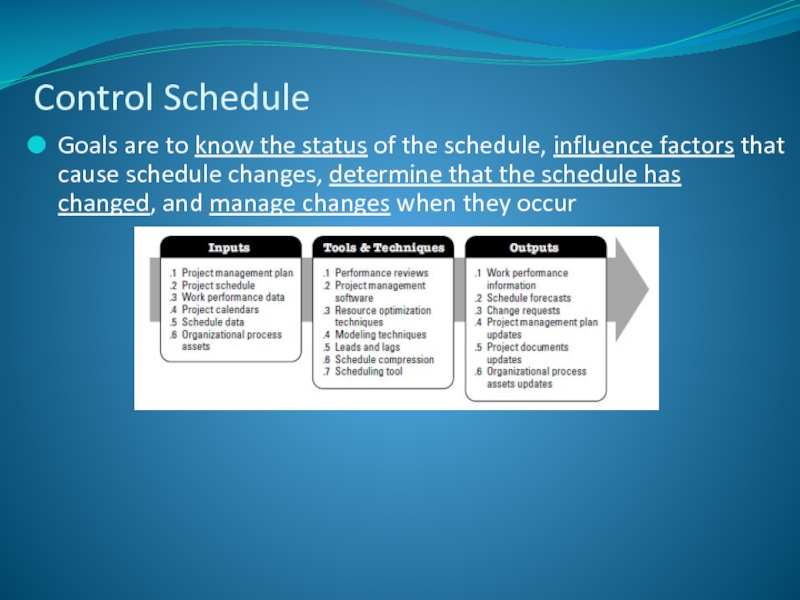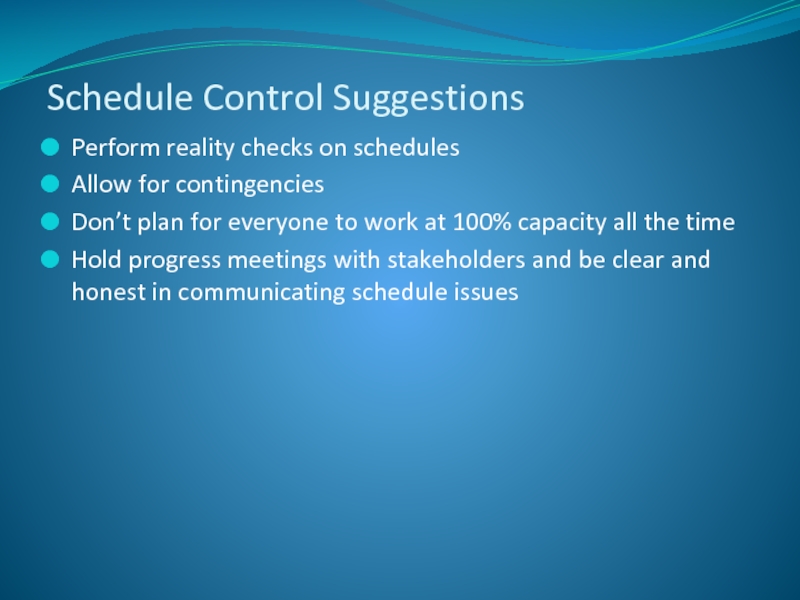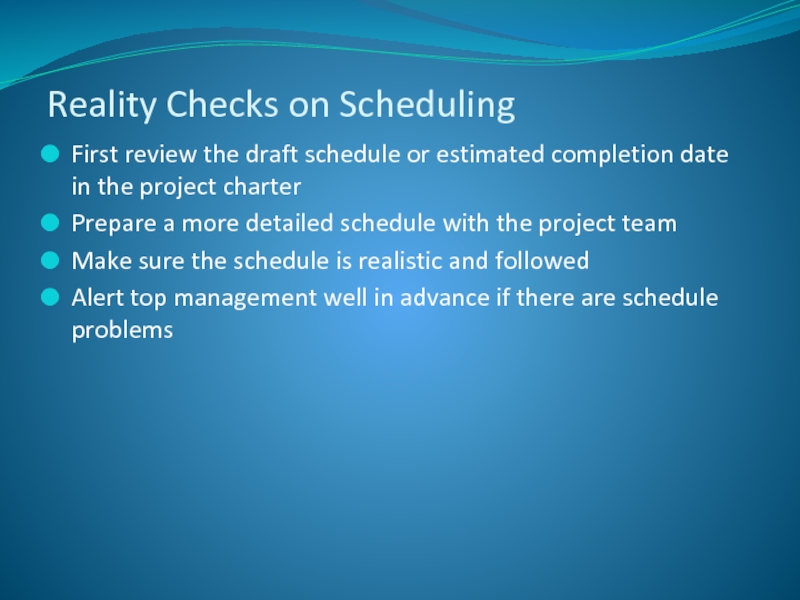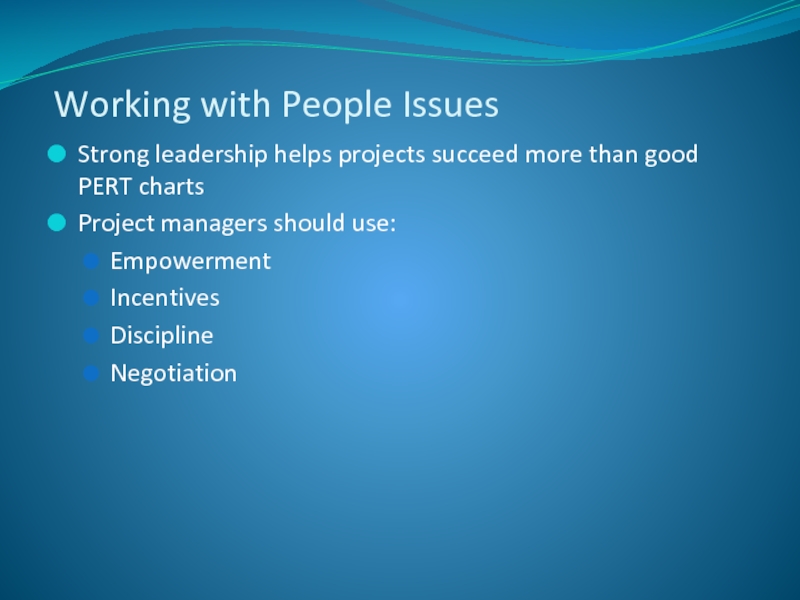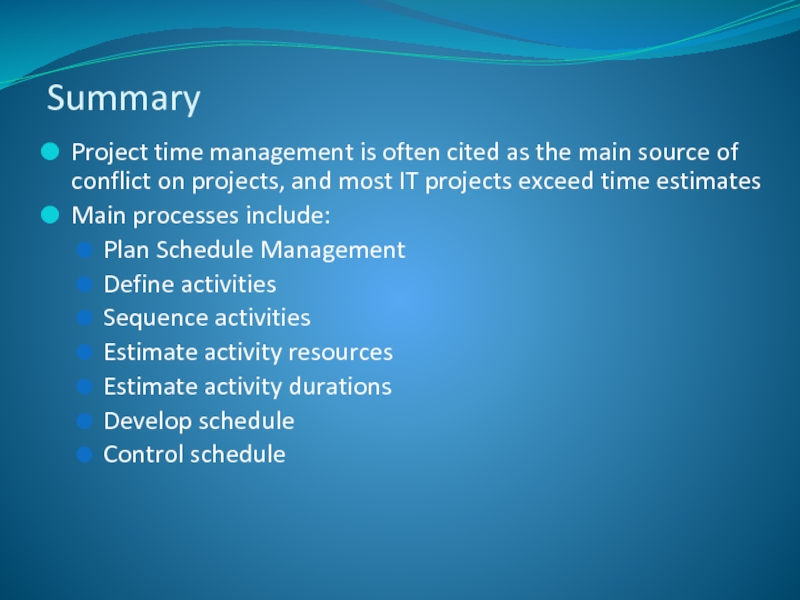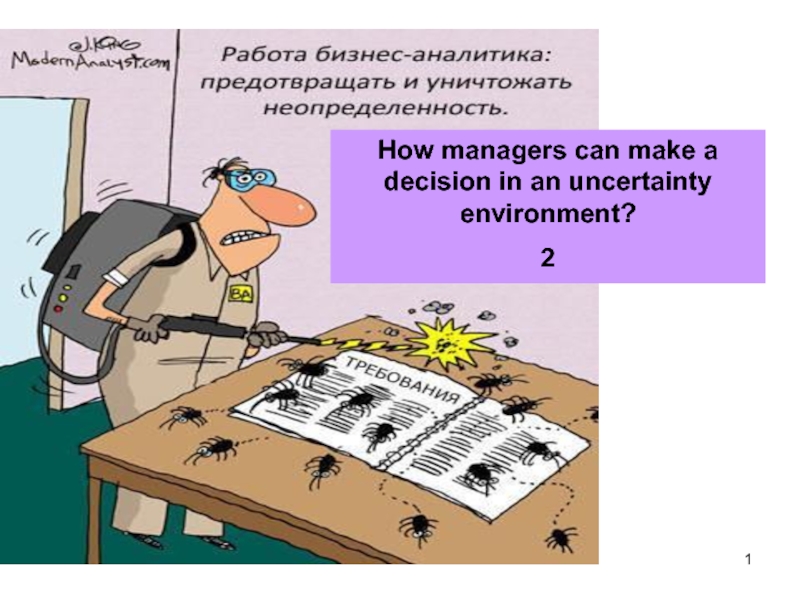- Главная
- Разное
- Дизайн
- Бизнес и предпринимательство
- Аналитика
- Образование
- Развлечения
- Красота и здоровье
- Финансы
- Государство
- Путешествия
- Спорт
- Недвижимость
- Армия
- Графика
- Культурология
- Еда и кулинария
- Лингвистика
- Английский язык
- Астрономия
- Алгебра
- Биология
- География
- Детские презентации
- Информатика
- История
- Литература
- Маркетинг
- Математика
- Медицина
- Менеджмент
- Музыка
- МХК
- Немецкий язык
- ОБЖ
- Обществознание
- Окружающий мир
- Педагогика
- Русский язык
- Технология
- Физика
- Философия
- Химия
- Шаблоны, картинки для презентаций
- Экология
- Экономика
- Юриспруденция
Time Management презентация
Содержание
- 1. Time Management
- 2. Understand the importance of project schedules and
- 3. Managers often cite delivering projects on time
- 4. One dimension of the Meyers-Briggs Type Indicator
- 5. Overview
- 6. Plan Schedule Management: process of establishing the
- 7. Plan Schedule Management is the process of
- 8. An activity or task is an element
- 9. An activity list is a tabulation of
- 10. A milestone is a significant event that
- 11. Involves reviewing activities and determining dependencies Key
- 12. Network diagrams are the preferred technique for
- 13. Also called activity-on-arrow (AOA) network diagrams Activities
- 14. Sample Activity-on-Arrow (AOA) Network Diagram for Project X
- 15. Activities are represented by boxes Arrows show
- 16. Sample PDM Network Diagram
- 17. Task Dependency Types Examples: Finish-To-Start: Pour Foundation
- 18. Before estimating activity durations, you must have
- 19. Estimate Activity Resources A resource breakdown structure
- 20. Process of estimating the number of work
- 21. Analogous estimating: Is a technique for estimating
- 22. Uses results of the other time management
- 23. CPM is a network diagramming technique used
- 24. First develop a good network diagram Add
- 25. Determining the Critical Path for Project X
- 28. Three main techniques for shortening schedules Shortening
- 29. It is important to update project schedule
- 30. Multitasking Example
- 31. PERT is a network analysis technique used
- 32. PERT weighted average = optimistic time
- 33. Gantt charts provide a standard format for
- 34. Gantt Chart for Project X Note: Darker
- 35. Gantt Chart for Software Launch Project
- 36. Goals are to know the status of
- 37. Perform reality checks on schedules Allow for
- 38. First review the draft schedule or estimated
- 39. Strong leadership helps projects succeed more than
- 40. Project time management is often cited as
Слайд 2Understand the importance of project schedules and good project time management
Define
Describe how project managers use network diagrams and dependencies to assist in activity sequencing
Understand the relationship between estimating resources and project schedules
Explain how various tools and techniques help project managers perform activity duration estimating
Use a Gantt chart for planning and tracking schedule information, find the critical path for a project, and describe how critical chain scheduling and the Program Evaluation and Review Technique (PERT) affect schedule development
Explain the importance of controlling schedule
Learning Objectives
Слайд 3Managers often cite delivering projects on time as one of their
Time has the least amount of flexibility; it passes no matter what happens on a project
Schedule issues are the main reason for conflicts on projects, especially during the second half of projects
Importance of Project Schedules
Слайд 4One dimension of the Meyers-Briggs Type Indicator focuses on peoples’ attitudes
Some people prefer to follow schedules and meet deadlines while others do not
Difference cultures and even entire countries have different attitudes about schedules
Hours, Holidays, Religion, Work ethic
Individual Work Styles and Cultural Differences Cause Schedule Conflicts
Слайд 6Plan Schedule Management: process of establishing the policies, procedures, and documentation
Define activities: identifying the specific activities that the project team members and stakeholders must perform to produce the project deliverables
Sequence activities: identifying and documenting the relationships between project activities
Estimate activity resources: estimating how many resources a project team should use to perform project activities
Estimate activity durations: estimating the number of work periods that are needed to complete individual activities
Develop schedule: analyzing activity sequences, activity resource estimates, and activity duration estimates to create the project schedule
Control schedule: controlling and managing changes to the project schedule
Project Time Management Processes
Слайд 7Plan Schedule Management is the process of establishing the policies, procedures,
Key benefit of this process is that it provides guidance and direction on how the project schedule will be managed throughout the project
Plan Schedule Management
Слайд 8An activity or task is an element of work normally found
Activity definition involves developing a more detailed WBS and supporting explanations to understand all the work to be done so you can develop realistic cost and duration estimates
Key benefits – a basis for estimating, scheduling, executing, monitoring, and controlling the project work
Rolling wave planning: iterative planning technique in which the work to be accomplished in the near term is planned in details, while the work in the future is planned at a higher level
Define Activities
Слайд 9An activity list is a tabulation of activities to be included
The activity name
An activity identifier or number
A brief description of the activity
Activity attributes provide more information such as predecessors, successors, logical relationships, leads and lags, resource requirements, constraints, imposed dates, and assumptions related to the activity
They should be in agreement with WBS and WBS dictionary
Activity Lists and Attributes
Слайд 10A milestone is a significant event that normally has no duration
It
They’re useful tools for setting schedule goals and monitoring progress
They have zero duration because milestones represent a moment in time
Examples include obtaining customer sign-off on key documents or completion of specific products
Milestone List
Слайд 11Involves reviewing activities and determining dependencies
Key benefit – defines the logical
A dependency or relationship is the sequencing of project activities or tasks
Dependency
Parallel
Overlap
You must determine dependencies in order to use critical path analysis
Sequence Activities
Слайд 12Network diagrams are the preferred technique for showing activity sequencing
A network
Two main formats are the arrow and precedence diagramming methods
Network Diagrams
Слайд 13Also called activity-on-arrow (AOA) network diagrams
Activities are represented by arrows
Nodes or
Can only show finish-to-start dependencies
Uses dummy activities which are represented by dotted lines
Dummy activities = no work
Arrow Diagramming Method (ADM)
Слайд 15Activities are represented by boxes
Arrows show relationships between activities
More popular than
Better at showing different types of dependencies
It’s also called Activity on Node (AON)
Precedence Diagramming Method (PDM)
Слайд 17Task Dependency Types
Examples:
Finish-To-Start: Pour Foundation -> Build the room, Race ->
Start-To-Start: While clean the living room = Start painting the dinning hall
Finish-To-Finish: Coding finish -> Before testing can be completed, writing a document -> editing a document
Start-To-Finish: Task 2 -> Task 1, Security guard shifts
Слайд 18Before estimating activity durations, you must have a good idea of
Consider important issues in estimating resources
How difficult will it be to do specific activities on this project?
What is the organization’s history in doing similar activities?
Are the required resources available?
Estimate Activity Resources
Слайд 19Estimate Activity Resources
A resource breakdown structure is a hierarchical structure that
Слайд 20Process of estimating the number of work periods needed to complete
Estimate Activity Duration
Слайд 21Analogous estimating: Is a technique for estimating the duration or cost
Parametric estimating: Uses a mathematical model as a basis of estimation
Three-point estimating (Program Evaluation and Review Technique):
Instead of providing activity estimates as a discrete number, such as four weeks, it’s often helpful to create a three-point estimate
An estimate that includes an optimistic, most likely, and pessimistic estimate, such as three weeks for the optimistic, four weeks for the most likely, and five weeks for the pessimistic estimate
Three-point estimates are needed for PERT and Monte Carlo simulations
Estimates
Слайд 22Uses results of the other time management processes to determine the
Ultimate goal is to create a realistic project schedule that provides a basis for monitoring project progress for the time dimension of the project
Important tools and techniques include Gantt charts, critical path analysis, and critical chain scheduling, and PERT analysis
Develop Schedule
Слайд 23CPM is a network diagramming technique used to predict total project
A critical path for a project is the series of activities that determines the earliest time by which the project can be completed
The critical path is the longest path through the network diagram and has the least amount of slack or float
Slack or float is the amount of time an activity may be delayed without delaying a succeeding activity or the project finish date
Critical Path Method (CPM)
Слайд 24First develop a good network diagram
Add the duration estimates for all
The longest path is the critical path
If one or more of the activities on the critical path takes longer than planned, the whole project schedule will slip unless the project manager takes corrective action
Calculating the Critical Path
Слайд 28Three main techniques for shortening schedules
Shortening durations of critical activities/tasks by
Crashing activities by obtaining the greatest amount of schedule compression for the least incremental cost
Fast tracking activities by doing them in parallel or overlapping them
Using the Critical Path to Shorten a Project Schedule
Слайд 29It is important to update project schedule information to meet time
The critical path may change as you enter actual start and finish dates
If you know the project completion date will slip, negotiate with the project sponsor
Importance of Updating Critical Path Data
Слайд 31PERT is a network analysis technique used to estimate project duration
PERT uses probabilistic time estimates
Duration estimates based on using optimistic, most likely, and pessimistic estimates of activity durations, or a three-point estimate
Program Evaluation and Review Technique (PERT)
Слайд 32PERT weighted average =
optimistic time + 4X most likely time
6
Example:
PERT weighted average =
8 workdays + 4 X 10 workdays + 24 workdays = 12 days 6
where optimistic time = 8 days
most likely time = 10 days, and
pessimistic time = 24 days
Therefore, you’d use 12 days on the network diagram instead of 10 when using PERT for the above example
PERT Formula and Example
Слайд 33Gantt charts provide a standard format for displaying project schedule information
Symbols include:
Black diamonds: milestones
Thick black bars: summary tasks
Lighter horizontal bars: durations of tasks
Arrows: dependencies between tasks
Gantt Charts
Слайд 34Gantt Chart for Project X
Note: Darker bars would be red in
Слайд 36Goals are to know the status of the schedule, influence factors
Control Schedule
Слайд 37Perform reality checks on schedules
Allow for contingencies
Don’t plan for everyone to
Hold progress meetings with stakeholders and be clear and honest in communicating schedule issues
Schedule Control Suggestions
Слайд 38First review the draft schedule or estimated completion date in the
Prepare a more detailed schedule with the project team
Make sure the schedule is realistic and followed
Alert top management well in advance if there are schedule problems
Reality Checks on Scheduling
Слайд 39Strong leadership helps projects succeed more than good PERT charts
Project managers
Empowerment
Incentives
Discipline
Negotiation
Working with People Issues
Слайд 40Project time management is often cited as the main source of
Main processes include:
Plan Schedule Management
Define activities
Sequence activities
Estimate activity resources
Estimate activity durations
Develop schedule
Control schedule
Summary

